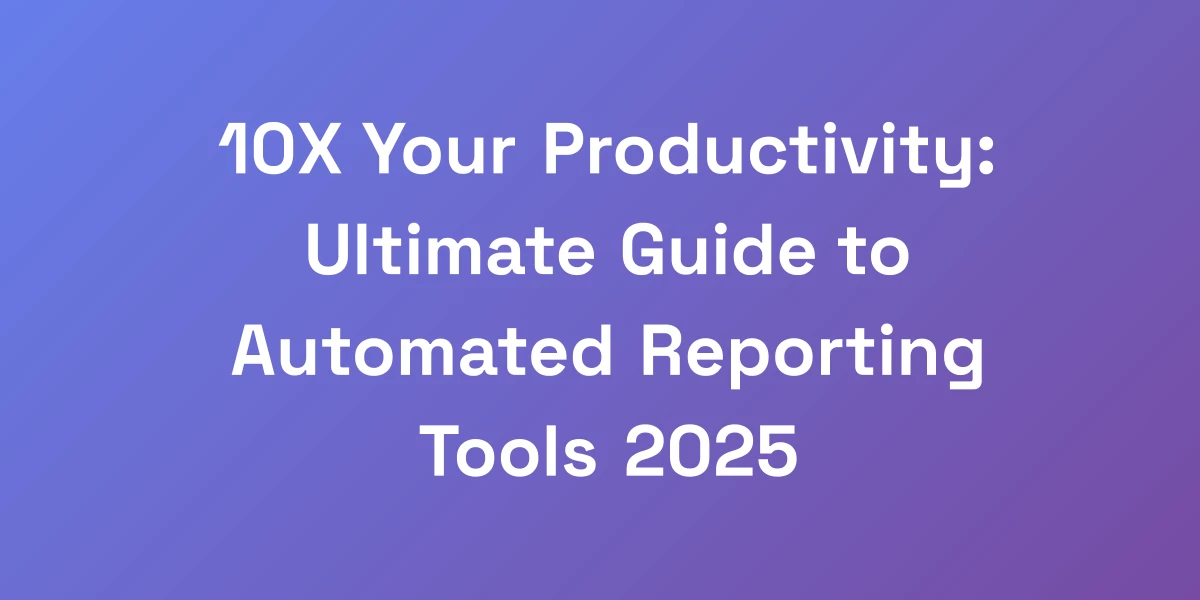
10X Your QA Speed: Ultimate Guide to Automated UI Testing in 2025
Mar 17, 2025 | By [email protected]
Imagine slashing your QA time by a whopping 10 times. Sounds like a dream, right? But it’s not. In the fast-paced world of software development, speed and accuracy aren’t just advantages – they’re necessities.
We’ve all seen the chaos that ensues when UI testing goes wrong. Bugs slip through, products falter, and customers? They’re left frustrated. But what if there was a way to turn this nightmare into a seamless, efficient process?
Welcome to the ultimate guide on automated UI testing for 2025. We’re diving deep into strategies, tools, and techniques that will revolutionize your QA process. Ready to transform how your team tests, identifies, and fixes issues? Let’s get started.
Why Most Companies Fail at UI Testing (And How to Win)
Let me hit you with some truth: 80% of companies are doing UI testing wrong, burning money, and wondering why their apps still break in production. We’ve seen companies waste millions on overcomplicated testing suites that their teams hate using.
Here’s the reality: successful UI automation isn’t about having the most expensive tools – it’s about having the right strategy and execution. In this guide, we’re going to show you exactly how to implement automated UI testing that actually works, saves you time, and catches bugs before they cost you customers.
The Real Cost of Manual UI Testing
Manual UI testing is time-consuming and error-prone. Think about it – every button click, every form submission, every navigation step requires human attention. This not only slows down the release cycle but also increases the likelihood of overlooking critical issues.
- Time-consuming: Manual tests can take days or even weeks to complete, delaying your product launches.
- Error-prone: Humans can make mistakes, leading to inconsistent test results and missed bugs.
- High Costs: Paying testers to perform the same repetitive tasks is not cost-effective in the long run.
Moreover, developers spend around 50% of their time reworking projects due to avoidable errors. Fixing faults after development can cost 100 times more than during the design phase. This clearly shows the high cost of manual testing – both in terms of money and productivity.
Common UI Automation Pitfalls
Automated UI testing isn’t a silver bullet. Many companies stumble because they fall into common traps that undermine their efforts.
- Poor Test Coverage: Focusing on quantity over quality leads to missing critical test scenarios.
- Flaky Tests: Unreliable tests that fail intermittently can erode trust in the entire testing process.
- Lack of Maintenance: Automated tests require regular updates to stay relevant with UI changes. Neglecting this creates more problems than it solves.
- Tool Misalignment: Using tools that don’t fit your specific needs or integrate poorly with your existing workflow results in inefficiency.
Avoiding these pitfalls is crucial for building a robust automated UI testing framework that delivers consistent and reliable results.
The ROI of Proper UI Test Automation
Let’s talk numbers. About one-quarter of companies report an “immediate” ROI from test automation. Another 24% see an increase in ROI within the first six months, and 28% reach a positive ROI within a year.
This isn’t just about saving money – it’s about maximizing your investment. Automation can lead to significant cost savings by reducing the time spent on manual testing and minimizing the cost of fixing bugs after they’ve been released.
- Efficiency Gains: Automated tests run faster and more consistently than manual tests, allowing for quicker releases.
- Cost Savings: Reduced need for manual testers and lower maintenance costs over time.
- Improved Quality: Early bug detection leads to higher product quality and better user experiences.
Implementing automated UI testing can transform your development cycle, making it more efficient and cost-effective.
Key Metrics That Actually Matter
When it comes to measuring the success of your UI testing efforts, not all metrics are created equal. Here are the ones that truly matter:
- Test Coverage: Ensure that your tests cover as much of the UI as possible, including edge cases.
- Test Execution Time: Monitor how long your tests take to run and aim to reduce this time.
- Defect Density: Track the number of defects found per test case to gauge the quality of your application.
- Automation ROI: Measure the return on investment by comparing the costs of automation against the savings from reduced manual testing.
Focusing on these metrics gives you a clear picture of your testing effectiveness and areas needing improvement. According to the latest UX statistics, these metrics can significantly influence user satisfaction and product success.
Setting Up for Success: Essential Prerequisites
Before diving into automated UI testing, setting up the right foundation is crucial. Here’s what you need:
- Clear Objectives: Define what you aim to achieve with automation – whether it’s faster releases, higher test coverage, or something else.
- Right Tools: Choose tools that align with your testing needs and integrate seamlessly with your development workflow.
- Skilled Team: Ensure your team has the necessary skills and training to implement and maintain automated tests.
- Stable Test Environment: A consistent testing environment reduces variability and makes your tests more reliable.
With these prerequisites in place, you’re setting the stage for a successful automated UI testing implementation.
The New Wave of UI Testing Tools That Actually Deliver
Listen, we’re not here to give you a boring list of every testing tool on the market. Instead, we’re going to show you the exact tools that are generating real results in 2024. These aren’t just any tools – these are the ones that successful companies are using to 10x their testing efficiency while cutting costs.
These tools integrate AI, require minimal maintenance, and actually make your developers’ lives easier. Let’s break down the ones that are worth your time and money.
Next-Gen AI-Powered Testing Tools
AI is revolutionizing UI testing. Tools like Testim, Applitools, and Functionize leverage AI to automate test creation, maintenance, and execution.
- Testim: Uses machine learning to stabilize tests and reduce flaky results, allowing your team to focus on writing meaningful test scenarios.
- Applitools: Specializes in visual AI testing, ensuring your UI looks perfect across all devices and browsers.
- Functionize: Offers AI-driven test creation and self-healing capabilities, making maintenance a breeze.
AI-powered tools are not just a trend; they’re becoming a necessity for maintaining efficient and reliable UI testing processes in 2025. For more insights on the role of AI, check out Artificial Intelligence in Test Automation.
Traditional Powerhouses That Still Deliver
Despite the influx of new tools, some traditional players have stood the test of time.
- Selenium: With a 75% adoption rate among testers globally, Selenium remains a versatile tool for automating web browsers. Its extensive community support and compatibility with multiple programming languages make it a go-to choice.
- Cypress: Catering primarily to the JavaScript community, Cypress provides robust end-to-end testing capabilities with a developer-centric approach. It’s particularly strong in simulating user interactions and handling asynchronous testing scenarios.
These tools continue to be reliable staples in the automated testing landscape, providing consistent performance and extensive capabilities.
Open-Source Solutions Worth Considering
If budget constraints are a concern, open-source tools like Playwright and Puppeteer offer powerful alternatives without the hefty price tags.
- Playwright: With a significant adoption rate of 45.1%, Playwright excels in cross-browser testing and streamlined workflows. Its robust support for multiple browsers makes it a favorite among agile teams.
- Puppeteer: Ideal for performance testing, Puppeteer allows parallel test execution and sophisticated browser interactions, enhancing the speed and depth of your testing processes.
Open-source tools provide flexibility and cost savings, making them an excellent choice for teams looking to maximize their testing capabilities without breaking the bank.
Mobile-Specific Testing Champions
Mobile applications require specialized testing tools to account for various devices and operating systems. Tools like Appium and BrowserStack are leading the charge.
- Appium: A versatile tool for automating mobile apps, Appium supports both Android and iOS platforms, allowing your team to write tests using the same API across different devices.
- BrowserStack: Offers a cloud-based platform for testing mobile apps across a wide range of devices and browsers. Its self-healing test automation leverages AI to adapt to UI changes, reducing maintenance efforts.
For teams focused on mobile UI testing, these tools offer the specialized features needed to ensure comprehensive coverage and reliable results.
Enterprise-Grade Testing Platforms
Large organizations with complex testing needs often turn to enterprise-grade platforms like Perfecto and Ranorex Studio.
- Perfecto: A cloud-based platform that supports end-to-end testing across web and mobile applications. Its robust infrastructure ensures scalability and reliability, crucial for large-scale testing operations.
- Ranorex Studio: Provides a comprehensive suite for test automation, including low-code automation and full IDE capabilities. It caters to both technical and non-technical users, making it versatile for diverse team structures.
Enterprise-grade platforms are designed to handle vast amounts of testing data and complex scenarios, making them ideal for organizations with extensive and varied testing requirements.
Cost-Benefit Analysis of Each Tool
Choosing the right tool isn’t just about features – it’s about value. Here’s a quick rundown:
- AI-Powered Tools: Higher initial costs but offer significant long-term savings through reduced maintenance and improved efficiency.
- Traditional Powerhouses: Well-supported and versatile, but may require more manual setup and maintenance.
- Open-Source Solutions: Cost-effective with great flexibility, but can require more technical expertise to fully leverage.
- Mobile-Specific Tools: Essential for mobile apps, but may come with additional costs for device access and cloud services.
- Enterprise-Grade Platforms: Best for large-scale operations with complex needs, though they come at a premium price.
Evaluate your team’s specific needs, budget, and technical expertise to choose the tool that offers the best return on investment for your automated UI testing efforts. For an in-depth look at the top automation testing tools, refer to Katalon’s comprehensive blog.
Building Your Automated UI Testing Strategy
Here’s where most teams go wrong – they jump straight into writing tests without a solid strategy. That’s like trying to build a house without a foundation. We’re going to show you how to create a testing strategy that scales and doesn’t fall apart when your app grows.
We’ll cover the exact framework we’ve used to help companies reduce their testing time by 70% while improving coverage. This isn’t theory – it’s battle-tested methodology that works.
Test Architecture Design Principles
Your test architecture is the backbone of your automated UI testing. It needs to be robust yet flexible to adapt to changes.
- Modularity: Break down tests into reusable modules that can be easily maintained and updated.
- Scalability: Ensure your architecture can handle an increasing number of tests without compromising performance.
- Maintainability: Design tests that are easy to read, understand, and modify as your UI evolves.
By adhering to these principles, you create a solid foundation that supports efficient and effective testing.
Prioritizing Test Cases for Maximum Impact
Not all test cases are created equal. Prioritize based on factors like user importance, feature criticality, and past defect rates.
- High-Impact Areas: Focus on parts of the UI that users interact with most frequently.
- Critical Functionality: Ensure essential features are thoroughly tested to prevent major failures.
- Historical Data: Use past bug data to identify areas prone to defects and prioritize those for testing.
By targeting your highest-impact test cases, you maximize the effectiveness of your automated testing efforts.
Creating Maintainable Test Scripts
Maintainability is key to long-term success. Your test scripts should be easy to update and extend without causing disruptions.
- Clear Naming Conventions: Use descriptive names for test cases and functions to enhance readability.
- Consistent Structure: Maintain a uniform structure across all test scripts to simplify navigation and updates.
- Commenting: Add comments to explain complex logic or reasoning behind specific tests.
Maintainable test scripts reduce the time spent on modifications and lower the risk of introducing errors during updates.
Handling Dynamic UI Elements
Modern UIs are dynamic, with elements that change frequently. Handling these effectively in automated tests is crucial.
- Flexible Locators: Use locators that can adapt to UI changes, such as relative XPaths or CSS selectors.
- Self-Healing Scripts: Implement scripts that can automatically adjust to changes in the UI, reducing maintenance efforts.
- Synchronization: Ensure your tests wait for elements to load or become visible before interacting with them.
By addressing dynamic elements proactively, you ensure your tests remain reliable and effective even as your UI evolves.
Integration with CI/CD Pipeline
Your automated UI testing should seamlessly integrate with your Continuous Integration/Continuous Deployment (CI/CD) pipeline.
- Automated Triggers: Set up automated triggers to run tests whenever new code is committed or updated.
- Parallel Execution: Utilize parallel test execution to speed up the testing process and fit into your deployment schedule.
- Feedback Loops: Establish clear feedback mechanisms to quickly identify and address failures.
Integrating UI testing with CI/CD ensures continuous quality assurance and accelerates your development cycles.
Test Data Management Strategies
Effective test data management is critical for reliable and accurate testing outcomes.
- Data Consistency: Maintain consistent and representative test data to ensure reliable test results.
- Isolation: Isolate test data from production data to prevent interference and ensure security.
- Automation: Automate the generation and maintenance of test data to reduce manual effort and errors.
With robust test data management, your automated UI tests can run smoothly and deliver dependable results.
all testing throughput.
Regularly reporting on ROI provides tangible evidence of the value automated UI testing brings to your organization.
Future-Proofing Your Testing Strategy
The testing landscape is constantly evolving. Future-proofing your strategy ensures you stay ahead of the curve.
- Embrace AI and Machine Learning: Incorporate AI-driven tools and techniques to further enhance your testing efficiency and accuracy.
- Stay Updated: Keep abreast of the latest trends and advancements in UI testing to continuously refine your approach.
- Invest in Emerging Technologies: Explore and invest in new technologies that can further streamline and optimize your testing processes.
By anticipating and adapting to future changes, you ensure your automated UI testing strategy remains robust and effective. For a glimpse into the future, read about software testing in 2025 and its emerging trends.
Conclusion
Automated UI testing is not just a trend – it’s a transformative approach that can significantly enhance your QA speed and efficiency. By avoiding common pitfalls, leveraging the right tools, and implementing advanced testing techniques, we can 10X our QA speed and deliver high-quality applications that delight users.
Remember, the key to successful automated UI testing lies in having a solid strategy, the right tools, and a skilled team. Start implementing these strategies today, and watch your testing process become faster, more efficient, and more reliable.
Ready to revolutionize your UI testing? Get started with automated UI testing today and take your QA processes to the next level. Have questions or need guidance? Reach out to us and let’s elevate your testing game together.








